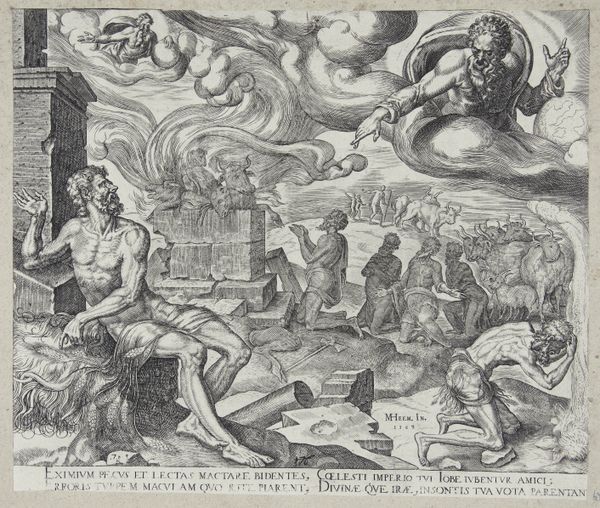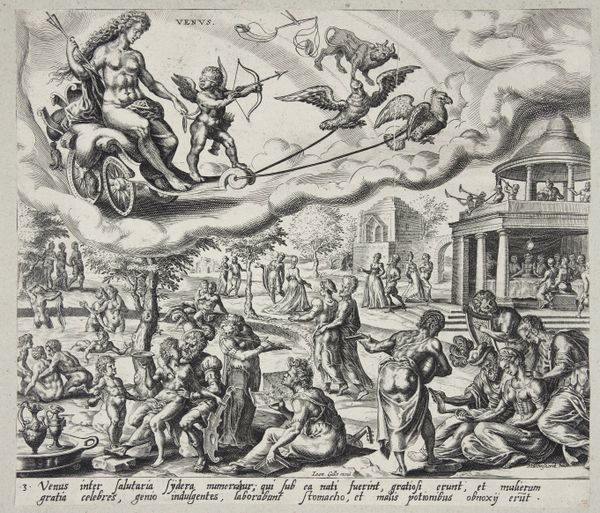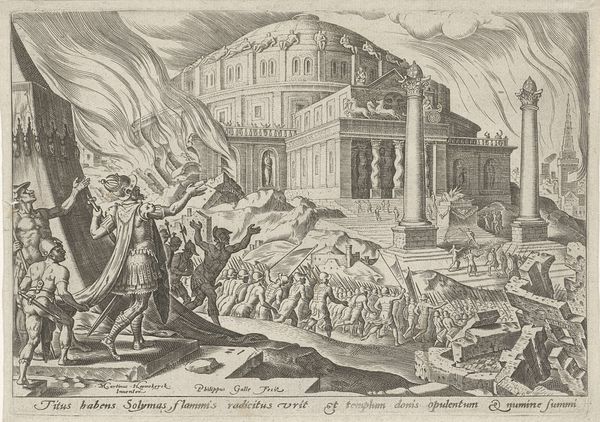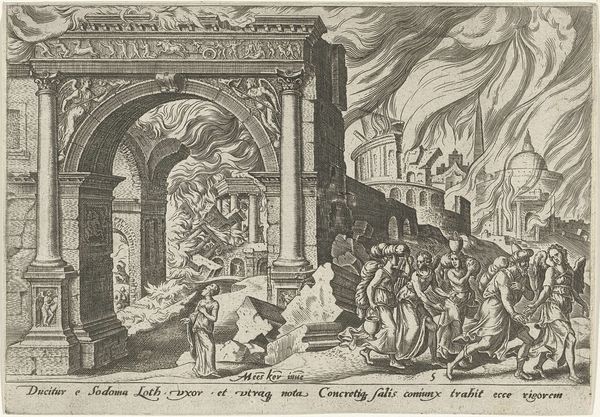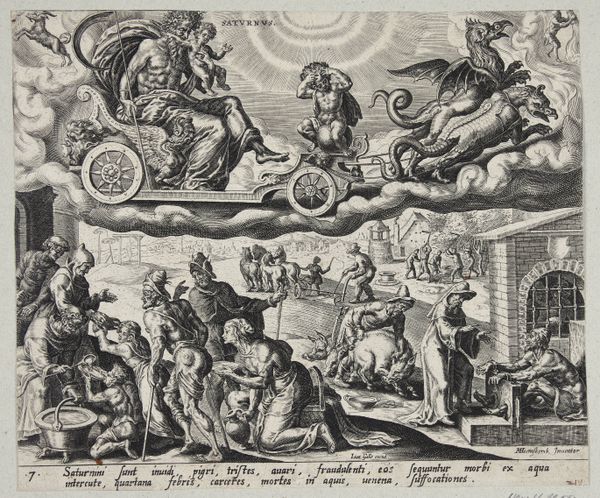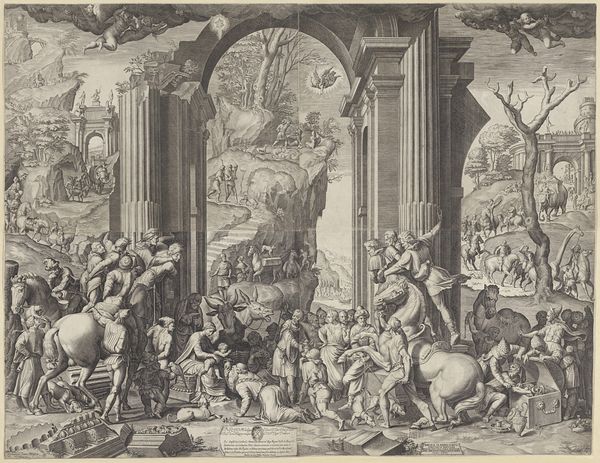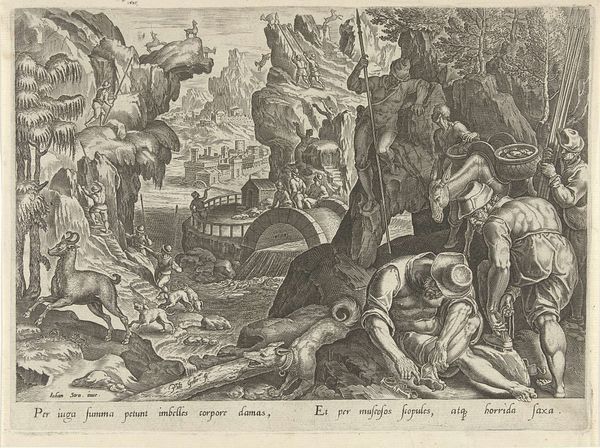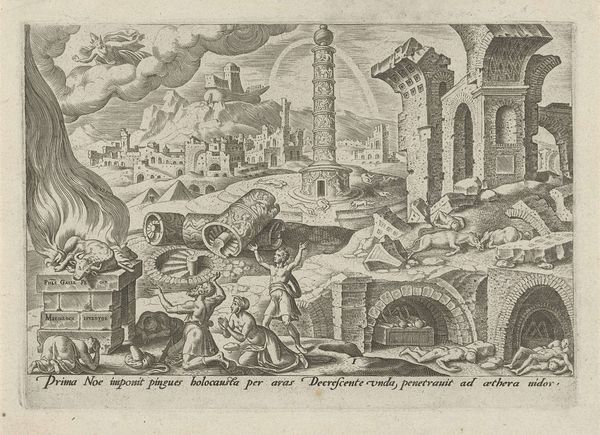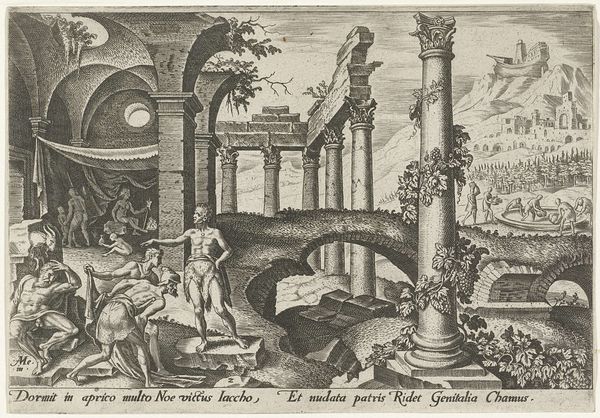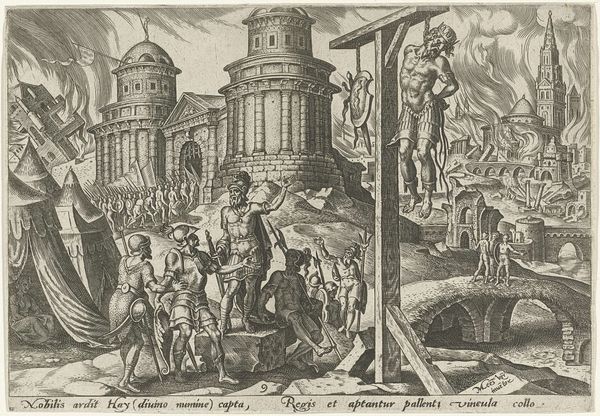
print, etching, engraving
#
pen drawing
# print
#
pen illustration
#
etching
#
old engraving style
#
landscape
#
figuration
#
11_renaissance
#
history-painting
#
northern-renaissance
#
engraving
Dimensions: height 140 mm, width 200 mm
Copyright: Rijks Museum: Open Domain
Philips Galle made this engraving titled, ‘The Chaldeans Plunder the Temple of Jerusalem’, sometime between 1570 and 1612. Here, Galle depicts a scene of destruction. We see Chaldean soldiers demolishing architecture and stealing treasures. But what did this subject mean to its 16th century audience? Galle was a publisher and printmaker in Antwerp, a city then under the control of the Spanish Habsburgs. His business depended on creating images for a Christian audience. These images often promoted a moral lesson. The sack of Jerusalem was understood as divine punishment for sin. Galle’s image would have been received as a warning. The architecture is an amalgam of ancient styles. This may have evoked the idea of a timeless moral lesson. To understand this image better, we can research the history of Antwerp and the role of printmaking in early modern Europe. We might also examine theological interpretations of the Old Testament. The meaning of this image is contingent on its social and historical context.
Comments
No comments
Be the first to comment and join the conversation on the ultimate creative platform.
